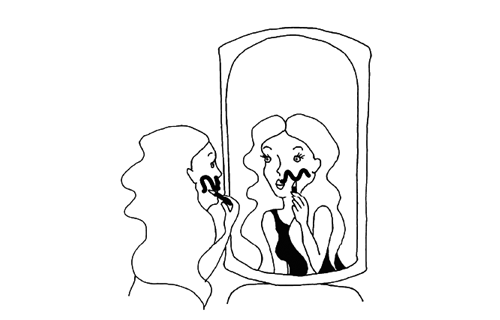
MIRROR DRAWING

Have you tried the mirror drawing task? It’s not easy, is it? This task was designed originally in the late 19th century, as a test of the ability to learn new motor skills and the extent to which those skills transfer to other tasks. Later, the test was also used to map one’s level of impulsivity and adaptation to stress and anxiety. The task, which you can try for yourself, is to copy the borders of a star-shape pattern but without a direct view of the stimulus. All you only see is its laterally reversed image in the mirror. So while drawing you cannot see your hand holding the pencil moving in the intended path. The task is indeed challenging, because in real life our perception is seldom presented with the mirror images. One has to get accustomed to this anomaly but it is possible to get better with training.
To evaluate performance on this test, we can measure our reaction times, the number of mistakes (drawing outside of the star-shaped pattern), the precision of the drawing, and the number of interruptions. In clinically oriented research, the test can serve as a stressor test so that symptoms of anxiety and frustration can be monitored. Performance can also be compared using the left and right hands to trace the pattern and by requiring clockwise and counterclockwise movements.
The test is interesting and you might try using it to impress your friends at a party. But is it good in other ways than for fun and basic research? Mirror drawing can be used as a diagnostic tool to assess spatial orientation and eye-hand coordination, for example in architecture or in dentistry. Dentists should be used to laterally swift of the visual world in their work in a patient’s mouth. Using the test, junior dentists and students can practice their fine motor tasks rather than directly in the patient’s mouth.
/ O’Boyle, M. W. & Hoff, E. J. (1987). Gender and handedness differences in mirror-tracing random forms. Neuropsychologia, 25, 977–982. /


